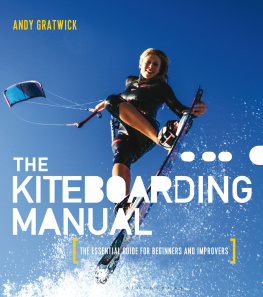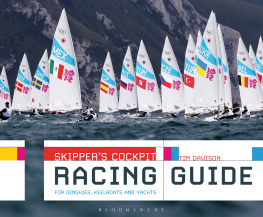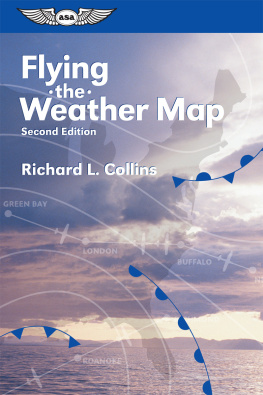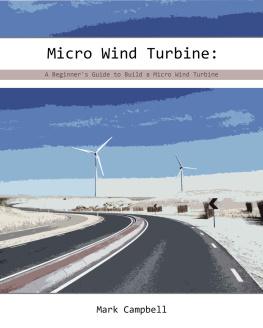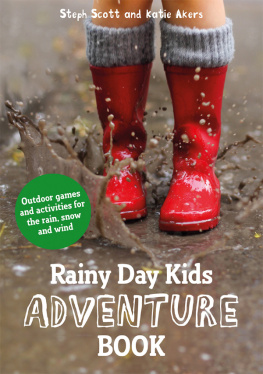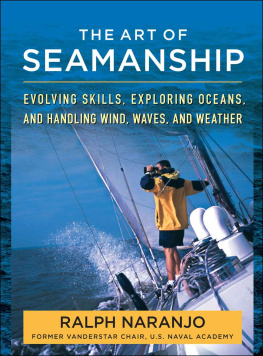

Adlard Coles Nautical
An imprint of Bloomsbury Publishing Plc
| 50 Bedford Square | 1385 Broadway |
| London | New York |
| WC1B 3DP | NY 10018 |
| UK | USA |
www.bloomsbury.com
Bloomsbury is a trademark of Bloomsbury Publishing plc
This electronic edition published in 2015 by Bloomsbury Publishing Plc
First published 2015
Andy Gratwick, 2015
[Illustrations Amanda Lewis, 2015]
Andy Gratwick has asserted his right under the Copyright, Designs and Patents Act, 1988, to be identified as Author of this work.
All rights reserved
You may not copy, distribute, transmit, reproduce or otherwise make available this publication (or any part of it) in any form, or by any means (including without limitation electronic, digital, optical, mechanical, photocopying, printing, recording or otherwise), without the prior written permission of the publisher. Any person who does any unauthorised act in relation to this publication may be liable to criminal prosecution and civil claims for damages.
No responsibility for loss caused to any individual or organization acting on or refraining from action as a result of the material in this publication can be accepted by Bloomsbury or the author.
British Library Cataloguing-in-Publication Data
A catalogue record for this book is available from the British Library.
[Library of Congress Cataloguing-in-Publication data has been applied for. add where a UK originated single-ISBN edition for which we own US rights]
ISBN: 978-1-4081-9203-0
ePDF: 978-1-4081-9205-4
ePub: 978-1-4081-9204-7
To find out more about our authors and books visit www.bloomsbury.com. Here you will find extracts, author interviews, details of forthcoming events and the option to sign up for our newsletters.
CONTENTS
INTRODUCTION
It has only been in the last five years that people have really had to think about what kiteboarding actually is in an official or formal sense. Since the late 1990s those in the know could point one out at the beach, but actually, what is a kiteboarder? What defines them in terms of equipment and technique?
In simple terms, a kiteboarder uses a traction kite to propel himself or herself across water, land or snow on a single-person board, ski or wheeled device. Both the engine (the kite) and the wheels (the board) can take many shapes and forms. Lines and control bars, or sometimes handles, can also differ greatly in length from 10 to 40m (32 to 130ft) with many systems for trimming and safety being available. The sport is governed by the same wind limitations as other sail sports, and follows similar competition rules in racing disciplines. It is possible to achieve great speeds and height in jumps without the need for high winds or big waves.
I am going to guide you through the most common form of the sport, which is kiteboarding on water with a multi-directional or twin-tip board. It should not be used as a way of learning the sport but merely as a form of knowledge-reinforcement; kiteboarding is simply one of those sports that you need to take lessons to learn. Other sports I have mastered, and indeed teach, can be attempted without instruction with limited or no risk if youre sensible, but kiteboarding fits into the same category as piloting cars, planes, helicopters and paragliders. Just like these, it can be safe and lots of fun if practised correctly, but it can be difficult and dangerous if undertaken alone and without structure and guidance.
Lets also make it clear that this book is no substitute for hands-on lessons in any circumstance. Attempting to rig, launch and fly a powerful kiteboarding kite was the source of numerous injuries and worse in the early days, and more guidance than is given here is required. Fortunately those days have passed and there are now safe, structured and affordable lessons available around the globe.


CHAPTER 1
THE SPORT: A BRIEF HISTORY
It may be relatively brief by extreme sports standards, but the history of kiteboarding is as fast-paced and exciting as the sport itself. Truly the product and reflection of a digital age, kiteboarding in all its formats and disciplines has been fortunate to benefit from instant communication, incredible leaps in technology and the fact that you can do something in one part of the globe and immediately share it with people worldwide. These modern advantages have probably accelerated the progression of the sport tenfold in comparison with more mature sports such as surfing, windsurfing or water-skiing. I am not going to try and document, credit or mention every stage in kiteboardings rich and vibrant history. I will, however, highlight a few important milestones and turning points.
Kiteboarding, as I will call it throughout the book, encompasses all manner of disciplines, but were looking primarily at on-water riding, which, until recently, was known as kitesurfing. However, there is a number of disciplines that complement, contribute towards and feed into kiteboarding as a whole, namely kite landboarding, kite buggying, snowkiting and the wacky world of kiteboating for propelling multi-person and larger craft. Even cargo ships sometimes use kites to harness the power of the wind and reduce their fuel costs by over 30 per cent!
All of these wonderfully diverse disciplines were bubbling away through the 1980s and early 90s in specific pockets of the world: in the desert flats of Namibia there were land speed assaults and adventures in kite buggies; a project called Jacobs Ladder built catamarans propelled by stacking kites (more on this later); in Oregon, water-skiers zoomed down lakes; and in Europe, French sailors inflated kites to propel surfboards on water. In fact, the sport is so international that there are now invitational camps for kiteboarding entrepreneurs, innovators and athletes from around the globe to discuss and progress business and the sport in new, imaginative ways.
Having watched and lived through kiteboardings rapid evolution and growth since 1997 I feel proud to have played my small part, and have had such fun travelling the world and meeting some inspiring people along the way. I have split my account in this chapter into a few historical events that unknowingly formed the basis of the sport, then look at the modern story of kiteboarding, which is still less than 20 years old. This may include the things we remember as sparking our own motivation to get into kiteboarding, from Laird Hamiltons TV footage in Hawaii in the early 2000s to the local heroes displaying their prowess (or maybe not) on the latest brightly coloured kites and boards at a windsurfing beach.
THE EARLY YEARS
So, where do we start? Well, kites have been around for centuries; their use for fun, fighting, propulsion and communication is documented as far back as 2000 years ago. During the intervening years, kites have been involved in some interesting and fairly significant events from the overthrowing of an emperor to major scientific and engineering feats, as well as annoying English gentry, which is usually a good sign that something is worth pursuing!
Next page
